Splittown review
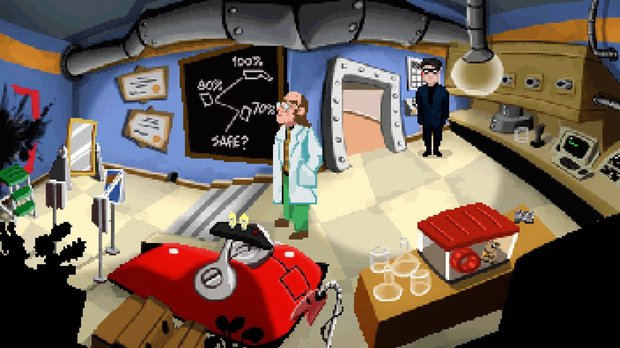
- 0 Comments
Charming cartoon spy adventure is frequently fun, though its unapologetically retro presentation may leave some feeling torn
It’s 1993. I’m sitting at my bedroom desk during summer vacation, playing one point-and-click adventure game or other on my 386 computer. I discovered this genre about a year ago and it’s an amazing pastime. And look: here is Splittown, a new game by the Finnish developer duo Juha Keränen and Mats Kyyrö of All-Seeing Eye that looks right up my alley, with an intriguing spy story and the same cartoony graphical style as some of my favorite games. But wait a minute – it’s not 1993 anymore! Does a game like this, with pixel art, no voice-overs and a cumbersome user interface still hold up after thirty-odd years, when even some of the best titles of yesteryear are being remastered with higher-res graphics, smoother animations and a more intuitive control system?
Sure it does! I’m always on the lookout for new games in the style of my teenaged favorites, because when they are done well, they are every bit as enjoyable today – in some ways even improving on the old formula, though at times with some of the same frustrations as well. While very much its own game, Splittown holds on strongly to that familiar retro look, making me feel fourteen years old again, mostly overjoyed with the experience, if occasionally wishing it was just a little more modern. If you are looking for innovation, this won’t be the game for you, but if you like to nestle in nostalgia, you will definitely feel right at home.
Leonard Nimby, a member of the IM5 secret service, usually works not as a true spy but in the science department, inventing all the cool gadgets the real agents can play with in the field. While he’s experimenting with a new shrink ray, however, rogue agent and new candidate mayor Goldenmouth infiltrates HQ with his cronies, drugs everyone inside and takes off with the new invention. Now it’s up to Leonard to stop him and retrieve the shrink ray on his own.
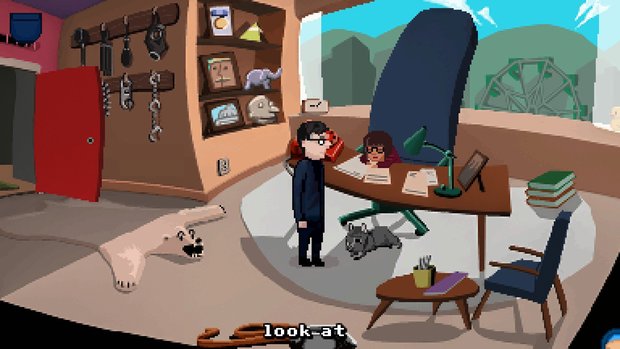
Retro fans will gush over Splittown’s pixel art and cartoon graphics that feel very much like a throwback to Day of the Tentacle. There’s something zany about it all, with strange perspectives and tilted corners, all the windows and doors having crooked slants instead of straight lines. Everything is colored brightly to further resemble a Saturday morning cartoon show. Sight gags include some slapstick humor where the main character falls flat on his face or blows himself up, and there are even some non-human characters: a mouse blocking passage, a human-size badger working in a café, the leader of the ants looking for a new and yummy home, and a goblin terrorizing the sewers.
Leonard will have to deal with them as well as a bunch of regular people. His supervisor Dancy is a strict, no-nonsense boss, not to mention the wife of the current Splittown mayor, so a conflict of interests is never far away. Master spy Otis is tired of fieldwork and would actually like to work in the science department too; he’ll gladly help out if you can arrange that transfer. War veteran Joe has become the bartender of IM5’s underground lounge and proves to be a fount of information when dealing with old technology, and another former soldier, Bob, is now the proprietor of a candy store that also sells several kinds of slushy drinks rumored to have ingredients based on old liquid explosives.
Leonard himself is a pretty deadpan character, trying to act very cool all of the time. He’s got black hair, a navy blue jacket, black pants with one hand constantly in a pocket, and wears impenetrable glasses hiding most of his emotions. Sometimes he’ll startle in a cartoonish, literal hair-raising fashion, and he’s not afraid to break the fourth wall and try to fool you, such as when he pretends he has lost his hand after jamming it in somewhere. The animation when he bends over to pick up something is rather slow, unfortunately.
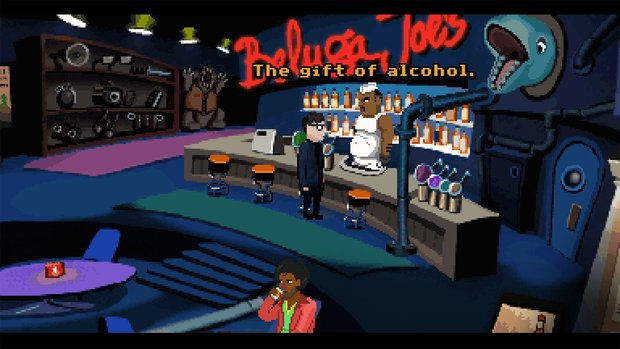
There is more than meets the eye with Leonard, however. He has a clear sense of justice, though you as the player still have the choice of whether to act on something or not, like informing your supervisor Dancy when you have uncovered an important secret. You learn more little tidbits about the protagonist’s past as you go along, yet I never really got a full grasp on him and felt there was still a lot left to discover when the credits rolled.
Splittown doesn’t have any voice-overs, which I don’t personally mind, making it feel even more genuinely like a title from the early nineties. Thankfully there are plenty of sound effects and an energetic spy-themed, surf-rock-influenced instrumental score throughout, featuring electric guitars and organs, and even some reggae during the title screen.
Most puzzles are of the inventory variety and hold little challenge, but the game also lets you twiddle with machinery or figure out hidden codes, which can take a few moments to get right. There’s a pump system you need to activate to clear a flooded pathway, a complicated coffee machine to jumpstart your morning, and a radio-controlled bomb you need to disable. I quite enjoyed the creativity behind these puzzles, with clues hidden elsewhere to discover.
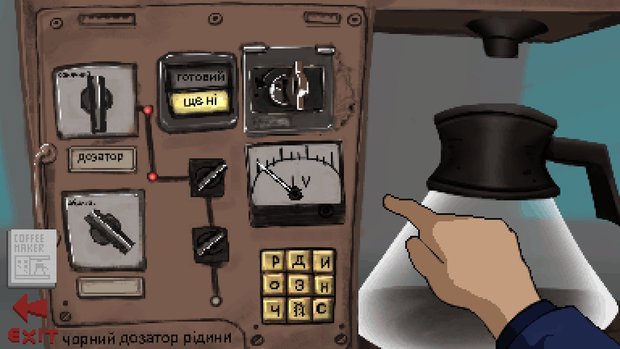
The final puzzle of Splittown is timed to give a sense of urgency, but the thirty minutes you get are quite sufficient. It is a rather tricky, two-fold puzzle in which you have to interact with two computer terminals – one where you have to fix a type of electrical grid, trying to provide a disabled compound with power, and the other where you have to type in a list of specific prompts to transport a package across different stations in town. While it wasn’t immediately obvious to me what I had to do, through some trial and error it started to make sense and in the end I thought it was a perfect puzzle for a science wiz spy.
It’s the puzzle right before that one that didn’t make much sense to me. It involves finding the code for a keypad lock, with the numbers hidden all over town by the bad guy of the story trying to keep you out. But why in the world he would go to all that trouble leaving those clues for you to find so you can get in and further thwart his plans, I have absolutely no idea.
What I did appreciate were the optional puzzles and dialogue that don’t immediately add to your progression through the game’s eight chapters, but rather provide backstory for non-playable characters, or just let you have some extra fun. For instance, there’s a hidden mini-game you can unlock on Leonard’s office computer titled Skull Island, which is a hilarious, simplified version of the first act of a beloved piratey adventure game. And there’s an optional puzzle involving the owner of a local café who has run out of coffee beans. When you help her out, it will unlock a cozy scene with Leonard enjoying a cappuccino while you run through some extra dialogue that fleshes out the café owner’s character. Or you can simply finish the coffee and get on with your main objective; it’s totally your choice.
Perhaps I didn’t unlock each and every one of those optional conversations, but I never felt like I fully understood this world. Splittown is rife with history: The main plaza displays a war monument, and during conversations you learn about other nations that IM5 and even the military sent missions to, but I never got a full grasp on it all. The description on the game’s website mentions a world split in two after a Cold War, like the Berlin wall in ours but here spanning all the way around the globe with Splittown right in the middle. Yet I never encountered that barrier, nor heard anyone ever mention it. While I thought it was an interesting premise, it seemed heavily underused with only a couple of small references, so I was left wanting more.
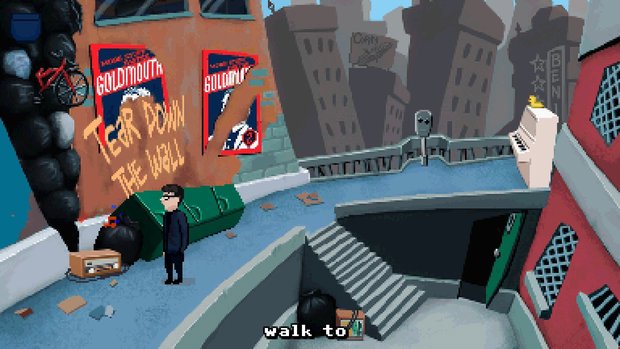
After finishing the game in a little under five hours, I suddenly realized that I never encountered some scenes shown in the trailer that involved more interaction with IM5’s master spy, Otis. It turns out there is an optional phone conversation you can have with Otis, during which he invites you on a side quest. Like Maxwell Smart, Leonard wears a shoe phone and you can find several numbers throughout the game to contact people. There’s even a number for an in-game hint line, but I didn’t feel the need to use it or call anyone else since the puzzles and solutions were straightforward enough to keep me steadily progressing. Besides, as the story went on, it was always Otis calling me up to keep me informed of his own progress, so I didn’t feel the need to take any initiative in that regard.
I’m glad I discovered this side quest, even belatedly, however, as it kept me entertained for another hour and a half dealing with a devious code-breaking puzzle to discover what happened to an important character in Splittown who went missing a long time ago. It’s understandable that it feels like a detour from the main storyline, being one of the last major content updates when the game was in Early Access. It’s too bad, though, that many gamers will probably never get to experience this section, since there is hardly any indication that it exists to begin with, or that you have missed it when you finish the game without it.
At least in my case, playing through the main story actually took me away from this optional sequence. I kept solving the puzzles I encountered, and then the window for the extra content shut without me even being aware it was open. And because I was busy with something possibly life-threatening, why would I suddenly leave it to go on a wild tangent to begin with? So now you know to look for it, but such a fun segment should have been better integrated, or at least highlighted in some way.
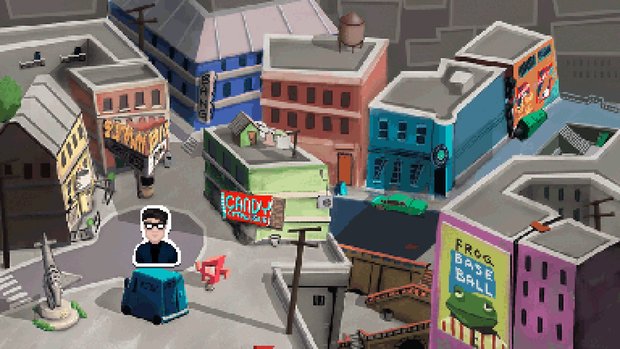
Thankfully I could go back without starting a new game as Splittown’s main menu offers a chapter select function. The only downside to this is that the game has only a single autosave file. You can’t record your progress manually, but the game does save automatically on exit, which is exactly when I would want to do so. The problem is that with only a single file, when you use the chapter select your autosave is immediately overwritten and you'll restart at particular game states predefined by the developers. This means that some things I'd already done in an earlier chapter, I had to do again because they were part of a puzzle that had to be solved in that particular chapter.
A more significant gripe I have with Splittown is the user interface, which fans of many AGS games and old Sierra adventures will recognize. The game is fully mouse controlled, but instead of making things easier it makes them quite a chore. Leonard can perform several actions: walk, examine, mess with (which is a jokey way of saying “use”) and talk. You constantly have to cycle through these actions using the right mouse button, without even an alternate hidden bar at the top of the screen to more quickly select your interaction of choice. Thankfully there’s another way to more immediately do so by using the numbers on your keyboard. Once I figured that out, the game played much faster, though I still would have preferred a more streamlined point-and-click control system.
There’s an important setting in the menu that relates to these actions as well. By default, every action you choose will reset back to “walk” after you have used them once. This isn’t very handy when your intent is to examine everything in a scene first, because you will have to cycle back to the eye icon every time. In the menu, you can make these verbs sticky, so that they remain active until you change them again manually. You can also activate Wimp-VisionTM, which allows you to highlight the hotspots with a press of the spacebar. This hilarious name alone perfectly fits my feelings about such help features. Fortunately I didn’t have to use it here, since I never had to resort to pixel hunting.
You can make use of fast-travel maps, but you have to physically find them in-game first. There are three major regions: the IM5 headquarters, the town itself, and an underground sewer system. Personally I didn’t take much advantage of the maps, because I preferred walking everywhere so I could keep looking around for anything I may have missed. There are some collectibles to be found, after all, in the form of rubber duckies. In the settings menu, these ducks unlock galleries of concept art, showing assets throughout the eight years of the game’s development. Most ducks are obvious but some are quite hidden, and sadly I still hadn’t found one by the time I finished the game.
Final Verdict
Splittown is a love letter to the adventure games of yore, set in a world with brightly colored pixel art and impossible architecture, filled with funny situations and fairly easy puzzles, along with a couple of mechanical challenges and codes to crack that make you feel like a spy on an impossible mission without delving too deep into clichéd secret agent tropes. I enjoyed controlling Leonard Nimby for the entire six hours (including that bonus side quest), though a memorable character he is not. Neither will the story linger for long when it’s done. It certainly has its charm, but the pieces of world-building proved to be too fragmented here to really rock my own. For retro adventure fans it’ll feel like a blast from the past, though with that comes some cumbersome interface issues that modern gamers may wish had been left in the past. Either way, it’s a solidly enjoyable experience. Does it compare to the early 90s genre classics it clearly wishes to emulate? To that I can only answer: close, but missed it by that much.
Hot take
Splittown’s retro spy adventure charms you with its pixel art presentation, humor and puzzles, though uncovering all of its optional content and background information requires quite the deep infiltration.
Pros
- Delightfully nostalgic throwback to the early 90s adventure classics
- Fitting spy-themed soundtrack
- Code-breaking and machine-manipulation puzzles befitting a secret agent
- Lots of fun optional content
Cons
- World-building is underdeveloped
- User interface could have been simplified
- A substantial side quest is too easy to miss
Johnny played Splittown on PC using a review code provided by the game's publisher.


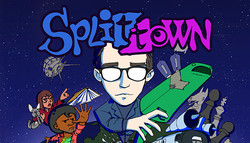








0 Comments
Want to join the discussion? Leave a comment as guest, sign in or register.
Leave a comment